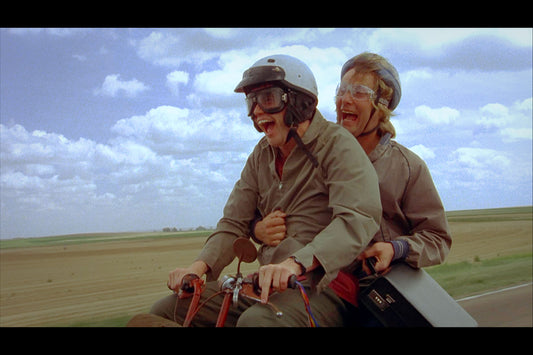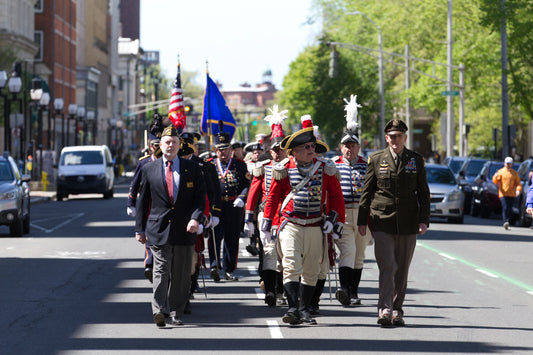Gina Mackinnon’s smallest client so far was a betta fish with one eye. She fed this fish by submerging the pellet on the end of a stick and releasing it on the fish’s good side. Her biggest client is still a Rhodesian Ridgeback named Penny, who didn’t like walks at first but happily clambered her 90 pounds into Mackinnon’s Honda Fit for a short drive to the park. Mackinnon has a menagerie of canine, feline, rodential and avian clients between, and by the end of 2019—her third year as owner and sole employee of the New Haven Pet Sitting Company—she had established a walking, feeding, cleaning and maybe training schedule with over a hundred of them total, each waiting their turn in warm but humanless houses while their owners are out for the day or away on vacation.
During a snow-encrusted Thursday morning in early December, while Mackinnon was introducing her spare key to a door in Westville, Zoey—a Wheaten Terrier—was already howling from somewhere inside. It was the sweet, uniquely canine frustration of having a visitor to greet but the visitor not quite being there yet. Inside, Zoey stood in the dining room with her forepaws against a spring-loaded gate. Mackinnon matched her jubilation. “Who got a haircut? What a pretty girl. What a pretty girl.” Freed into the living room, the dog hopped and spun, trying to close the distance to Mackinnon’s face from just above her knees. Mackinnon employed a rebuke unique to small dogs: “Come here, you. You are not supposed to jump up. Because you guys are so cute—not threatening at all—we let you get away with everything.”
sponsored by
By arrangement with dog owners, Mackinnon will devote a time slot to training and discipline, but dogs are both her simplest and most complicated clients insofar as her charter is mainly to bust them loose—put the sweater on them, attach the leash, then usher them out the way she had come in. Dogs are unanimously in favor of this, but they also have their own agendas once they’re outside.
For example: “This one, Zoey. I call her The Professor or The Pet Detective because she has to sniff everything. She is known for not liking to walk.” Mackinnon said this while acknowledging that Zoey was in fact racing in front of us that day, perhaps pressed by the cold. “Sometimes because she’s so social and loves direct interaction—I mean, it’s silly, but nose boops—I lean down and we do the nose boop and then she gets excited and keeps walking.” Zoey lingered on a patch of frozen grass over what Mackinnon hoped wasn’t roadkill. “What did you find? Did you just lay down on a dead thing? I hope you did not lay down on a dead thing.”
A half hour and a few blocks later, a pitbull mix named Harper Bean came to a similarly motivated halt. Mackinnon was ready for this. “We’re not going that way, we’re going this way. You can sit there, but we’re not crossing the street.” The dog was gazing at the Dunkin’ Donuts at the other end of the intersection, not obviously listening. Mackinnon explained, “This is one of her sticky points. I always tell her we’re not going to go to the Dunkin’ Donuts.” Harper Bean’s faith that one day a baker with a floppy hat would emerge from the service door with a tray full of donuts just for her had gone undiminished by months of walks, but after some cajoling, she continued onward. “When I first started working with her, she would have completely lied down and not moved. So that is her
Mackinnon manages dogs and time—one in mischievous contradiction with the other. Her menagerie is scattered across New Haven. She spends entire weekdays shuttling from one end to the other. “These are the days I sort of live out of my car.” Mackinnon enumerates some of the ready supplies she has in tote bags on the back seat: “two gloves, an extra pair of shoes, two water bottles… I got dry Frosted Mini Wheats, nuts and berries back there.” Her time spent at each visit is set with the owners, but she manages the time between visits by not having to go home for stuff. As I was following her from house to house, dog to dog in Westville, she was also thinking of her schedule for Christmas—Christmas week, really—when some pet owners would be leaving town altogether. “I think on my busiest days, I’ll be putting in four and a half, five hours of drive time. And I’ve got somewhere between 14 and 16 pets to see.” On Christmas Day, she’s probably the closest thing to Santa Claus in New Haven, dropping by an improbable number of sleepy, decorated houses in a single day to reward good behavior.
Getting to that many houses has been a matter of route planning, sequencing her visits to minimize the impediments—i.e. wrong-way streets, left-hand turns, busy intersection crossings—between one and the next. “Last year, I was on my cat route in East Rock. And it probably took like an hour and a half of me looking at maps and figuring out what the best routes were.” She also realized that she could shave precious minutes from her total driving time in a car that parks or backs out of narrow driveways quickly—and efficiently. “I had bought a minivan
Her dog and cat routes are dotted with other animals—including, these days, a guinea pig pair who freely roam the house, scurry into hiding when she arrives and then re-emerge when she serves their salad. She has yet to turn down a client by its variety, although she admits to being not especially fond of snakes. Size is a non-issue, of course, perhaps only circumscribed by the pet’s fit in her Fit. She did once have to turn down a pair of 100-pound dogs who were also (the owner had to admit) compulsive squirrel chasers; but this was more a calculation of power and predictability than a general fear of big dogs.
Indeed, Mackinnon grew up in Jackson, Mississippi, with some of the biggest. “My first dog was a Great Dane,” she says. “Great Dane followed by Great Dane followed by Bull Mastiff. The Bull Mastiff was 180 pounds…” Clocking in well below that weight, she would get to the top of the nearby hill on the endlessly renewable energy of the Mastiff, who was simultaneously leashed and unleashed. Holding one end of the leash, “I’d get on my skateboard and I’d have this dog run! run run! run run! run run! up the hill as fast as he could go.” Then dog and skateboarder would race each other to the bottom and start again.
Back in Westville, her third appointment of the morning was with a pair of Border Collies, nine-year-old Berkeley and 15-week-old Charlie. Their 40-minute slot was devoted to both exercise and training. Usually, Mackinnon says, “with puppies in particular, if people want me to do light training, I will do light training with them, but I can’t exercise them and train them, because training tends to take a lot of repetition, a lot of time.” She had, however, found a way in the backyard of Berkeley and Charlie. Knowing Berkeley would always fetch her favorite stick, and knowing that Charlie would then always steal it, Mackinnon had cobbled together another kind of dog locomotive. After a favorite stick waylaying, Mackinnon would call Charlie over, getting him to sit and drop the stick using commands, praise and treats. She would then pick up the stick for Berkeley, still confounded but hopeful, and throw it again, starting the cycle anew.
For dogs, at some quintessentially canine level, every run—for the stick or for the hilltop—is like the first, which Mackinnon believes is exactly what fuels their progress. Cats, on the other paw, are trickier to figure out, as we’ll discover in tomorrow’s edition.
New Haven Pet Sitting Company
(203) 441-PETS (7387) | newhavenpetsittingcompany@gmail.com
www.newhavenpetsittingcompany.com
Written and photographed by David Zukowski.








